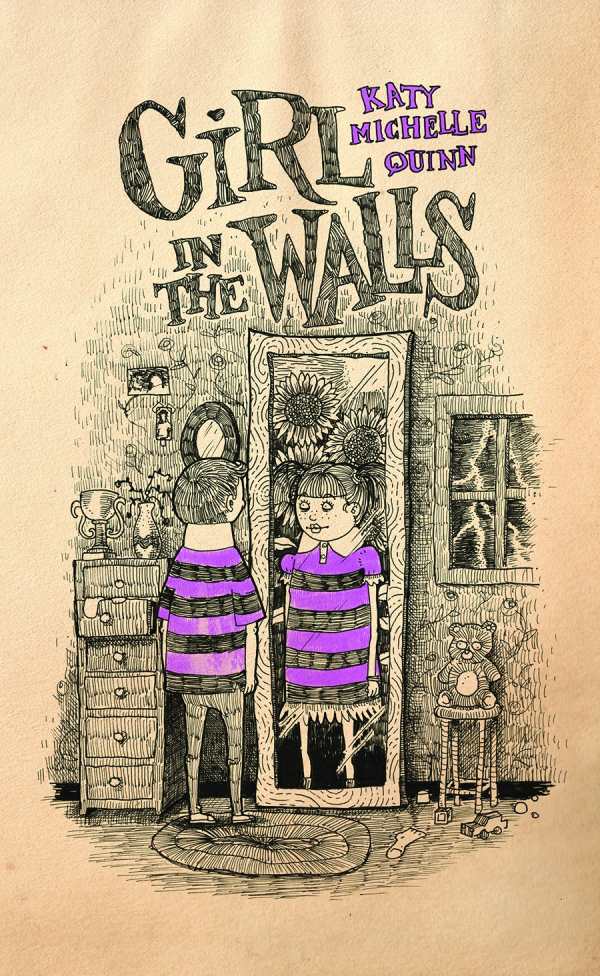Girl in the Walls
In Katy Michelle Quinn’s visceral, fervent novel Girl in the Walls, the only queer kid in a traditional town finds a balm in an otherworldly ally.
When Vernon’s family relocates from Seattle to a small town, their developing self-awareness is squashed flat. Vernon loves their pink highlights and purple nail polish, and is willing to tolerate daily bullying in order to express themselves, but in their new town, their tiny toehold on their identity is taken away. Vernon is miserable, and reverts to self-injury as a coping mechanism. As they cut, the marks on their skin open a hole in their bedroom wall. A girl, Violet, is waiting inside, and her friendship with Vernon creates a connection to Vernon’s inner self that is unaffected by the pressures and fears of the real world.
Vernon’s comfort in Violet enables their survival, but is also inextricably, problematically linked to self-injury. Vernon has a few adult allies; most of these are bumbling and out of touch. An English teacher, for example, comes out to Vernon, who is offended that they are perceived as “gay.” The subtle social interactions of middle school are written well, evoking the genuine cringiness of early adolescence.
Although the book leans on stereotypes, including oversized, bullying jocks and effeminate gay boys, its language is rich and intense. Vernon’s angst is palpable and unsettling; scenes of their self-injury are so vivid that they are nauseating. As Vernon navigates the landmines of their gender and the implications of transition, they struggle with self-harm so severe that they end up hospitalized. “I wanna be myself,” they say, but figuring out how to do that without causing permanent damage seems to elude them.
A brutal coming-of-age story, Girl in the Walls is a dark fairy tale about the struggle of claiming queer identity.
Reviewed by
Claire Foster
Disclosure: This article is not an endorsement, but a review. The publisher of this book provided free copies of the book to have their book reviewed by a professional reviewer. No fee was paid by the publisher for this review. Foreword Reviews only recommends books that we love. Foreword Magazine, Inc. is disclosing this in accordance with the Federal Trade Commission’s 16 CFR, Part 255.

